Introduction and equipment
Today it is going to snow, right here in this room! (It may seem strange to
make it snow in a classroom or similar setting.) We will also learn some things
about cloud physics. We will watch a cloud form. Later we will convert that
cloud into millions of sparkling snow crystals. Then we will make those snow
crystals grow until they fall to the floor. We will also learn how snow crystals
get their shapes and how the techniques of cloud seeding were discovered.
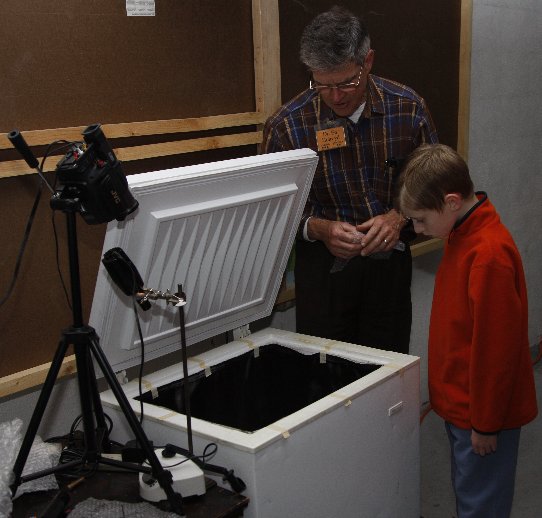
Usually our rooms are too warm for snow to form or
survive. We will make it snow in this chest freezer instead. A chest freezer
opens at its top. We cannot use the other type of freezer that opens at the
side like a refrigerator. The cold air would spill out onto the floor when the
door is opened and then we could not use it. A chest freezer keeps the cold
air inside. If you have a chest freezer at home, you can do this experiment
there. My wife let me use one end of our large chest freezer for demonstrations
for friends and neighbors. My mother let me have freezer space when I was younger.
(This is a Sears 5 cubic foot freezer, weighing about 104 pounds.)
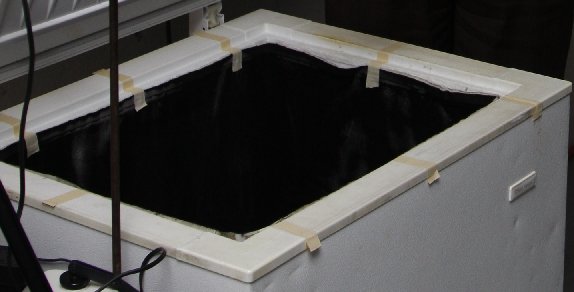
Most freezers are white inside. It is difficult to
see white cloud and white snow crystals against a white background. Therefore
this freezer is lined with black velvet. You don't need to use black velvet.
You could use black garbage bags or blue construction paper or anything dark.
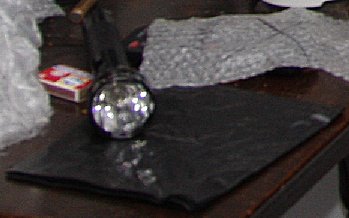
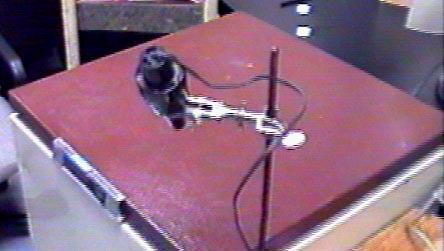
Next we need a light beam. At home you can use a flashlight. Here I am using
a microscope light so that I don't have to hold it. The room lights must be
off, though we need to have a little light leaking in from elsewhere so that
we can see what we are doing.
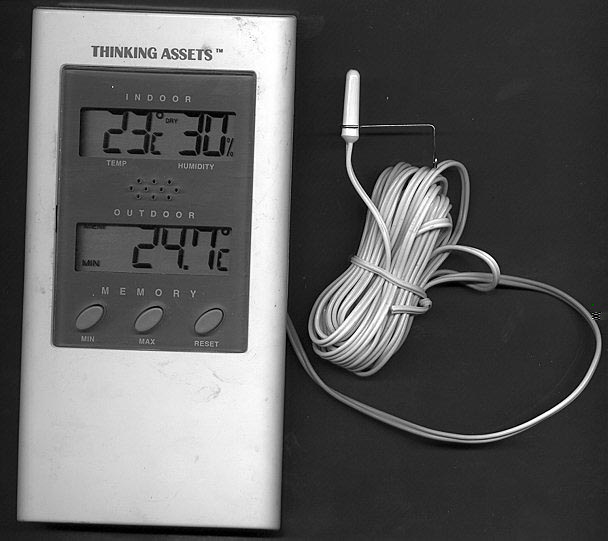

I have found it helpful to place an electronic thermometer in the freezer so
that I can monitor the air temperature there. If the freezer becomes warmer
than about -5 C (23 F) there can be problems getting the snow to form.
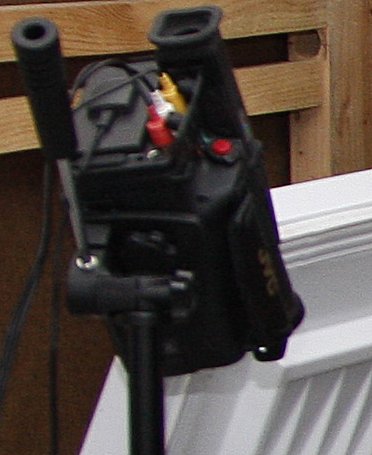
For small groups of people that is all you need for equipment. However, in a
classroom situation with perhaps two dozen students it is helpful to have some
video equipment. Only about eight to twelve people can fit around this freezer
at a time. The TV camera, which looks down the light beam, has the best view
of the cloud. It is zoomed into the freezer so that the light beam nearly fills
the view.
The TV screen is very important in a classroom with younger elementary students
because it holds their attention while some of their classmates are around the
freezer. It is normal for the seated students to see things on the TV before
those at the freezer see them close-up. That is because the TV camera has been
given an excellent view.
A web camera hooked up to a laptop computer to which a projector is attached
can substitute for the TV equipment.
Back, Next
Home,
sequence,
clouds,
vapor growth,
snowstorm,
crystal growth,
cloud seeding history,
related topics,
water optics,
ice optics,
trouble shooting






